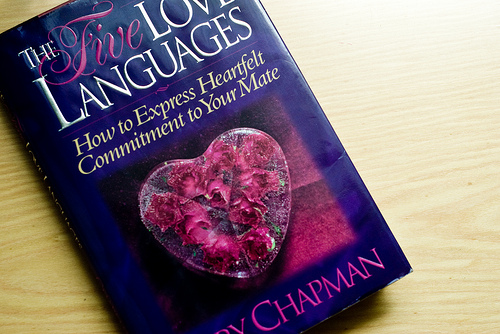Teaching With The 5 Learning Languages

One of the books that impacted my marriage the most was The Five Love Languages by Dr. Gary Chapman. In this book, Dr. Chapman introduces us to five languages of love:

His premise is that everyone speaks all five but everyone has a primary love language. The primary love language is the way you best perceive and express love. In marriage, the chances of both parties speaking the same primary language is slim. In order to fully express our love to our spouse, we must do so in their primary language. This is the best way for them to completely perceive our love.
Often times, disagreements and feelings of not being appreciated aren’t derived from actual feelings or disagreements but from two people expressing love in their own language and not in the language of their partner. For someone who’s primary language is Words of Affirmation, any gift or act of service won’t mean as much as words. For someone who’s primary language is Quality Time, gifts will feel cheap and sort of a cop-out if they aren’t getting to spend time with their partner.
When this is studied out, it’s easy to see how learning your partners primary love language will make communicating love much easier.
No two kids are alike. Their personalities differ and their interests vary from child to child. Two kids may love video games but hate the game the other is playing. Two kids may enjoy music but hate each other’s favorite genre.
It’s no different in how children process and consume information. If you teach in one learning language but 60% of your classroom speaks a different primary learning language, you are failing to communicate to 60% of your classroom as effectively as we could.

These are the students that learn through visual stimulation. Concepts communicated through pictures or diagrams can be learned much faster than being told or reading the same information.
For visual learners, simply hearing the teacher speak or reading from a text book isn’t feeding their primary learning language. If the teacher uses the chalkboard to illustrate their lesson, the visual learners will be able to process the information from the speaker much more effectively.
These are the students that learn through experience. You find a lot of these types in the computer sciences or mechanics. Simply explaining something in theory is not going to be retained. However, if you make them follow along and do the task being explained, learning is naturally maximized.
For programmers, learning a language from a video or book doesn’t stick with the student as much as them actually programming something using the new concepts. DOers learn best when they can learn with hands-on activities.
These are the doodle kids. They may not take notes all the time and they may not seem like they are processing the visual cues the teacher is using. They may never even read the chalkboard. These students are locked inside their head as they listen to the teacher lecture.
For these students, visual cues don’t matter. Neither does hands on experience. They want to hear a concept and then think about how to apply that concept. They are usually introverted, processing information internally rather than externally. This is why doodling isn’t always a bad thing. Absent-minded doodling is simply their mind processing information they are receiving audibly.
These are the kids that have to take notes to process information. When studying for tests, they like to handwrite the material they must remember. They will usually have notebooks of notes from their classes as writing down information is the best way for them to retain concepts and information.
Many times simply writing things down one time will help them remember something rather than repeating it to themselves several times.
These are kids that think outside of traditional education method. These are the students that can solve complex math problems when given to them in a word problem rather than a math formula. The type of math where you have to show your work as you go through problems will be boring and annoying to them. However, allowing them to solve the problem outside of restraint leads to them solving it in ways that make sense to them, usually in story format.
These students will remember an illustration from a lecture long after the point of the lecture is gone. They will even remember character names and the quirks of characters in a story without remembering the visual cues left on the board.
In a lot of classrooms, teaching in the languages of each student is impossible. There are also skills that must be taught that will be outside the primary learning language of each user. Storytellers may excel at history while the visual learners excel at math. In some ways, you can’t teach solving math formulas in ways that every language will find appealing.
However, with creativity, a teacher can mold their teaching around the strong points of all five languages. Homeschoolers may be able to completely revamp their curriculum for each student.
No matter what educational setting, maximizing the effectiveness of each lesson can be achieved by taking into account each students primary learning language, and teaching in that language.
License: Creative Commons
image source
License: Creative Commons image source
Ryan is the Marketing Manager for SPARKON, an EdTech company in Seattle, WA. SPARKON helps young people discover who they want to be and shows them how to become that person.
